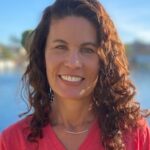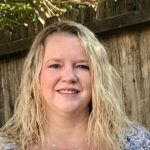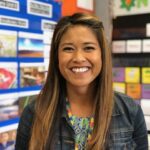Social-emotional well-being has become part of an important conversation in education and beyond, especially with the emergence and implications of COVID-19. We contend identity, belonging, and agency contribute to the social-emotional well-being of both students and teachers. You might ask what these things have to do with assessment. With assessment as our lens, we explore the implications our practices may have on the well-being of those they were designed to serve.
From a student perspective, our goal as educators is for students to see themselves and their peers as capable sense-makers. We believe all students bring intuitive knowledge to school, and our job is to make that visible and leverage it within the community of learners. We recognize our decisions and instructional moves impact student identity, and we hope that impact is productive. Let’s take a look into Michelle’s first-grade classroom and listen to how she leverages students’ thinking and makes students’ math discourse visible to each other. After she analyzed student data from a recent assessment, she realized her students could benefit from counting. During a counting collections activity in her classroom, she noticed two students working together to count a collection of bread tags.
Teacher: I see that you decided to count this collection separately. How many are in the collection all together and how do you know?
Julia: I counted 118 and Lexi counted 80, so it is 118 plus 80. [As the student is explaining her thinking, the teacher writes 118 + 80 on a whiteboard.] I am going to take the 10 from the 118 and give it to the 80 and that makes 90. Then I add the 8 after. [Then student wrote on her paper 100 + 90 + 8 = 198]
Teacher: “Lexi, what is it about what Julia said that makes sense to you?”
Lexi: I understand that Julia has 118 and I have 80. I see how she put the 8 at the end. Where is my 80?
Julia: I left your 80 and I gave my 10 to your 80. So now it’s 90. But the 100 is still there, and so is the 8.
Teacher: Lexi, tell me where the 90 came from?
Lexi: I see that it’s the 80 plus the 10.
Teacher: So, can you see this in another way? Is there another strategy you were thinking about to count all the bread tags?
Lexi: We counted by 20s. So I just counted by 20s then I don’t have 20 on the last one. There’s only 18 instead of 20. 20, 40, 60, 80, 100, 120, 140, 160, 180 and then there’s 18.
Julia: Yes! The last part is the 10 and the 8 to make 198
Teacher: I watched both of you use your strategies in counting and adding to find out how much is in this large collection. What did you learn from each other?
With both students contributing to this conversation, they experience the value of listening to each other and recognize themselves as mathematicians. Michelle provided a space for students to value their thinking by acting as a facilitator in their conversation. Students walked away from this activity feeling empowered mathematically and, as a result, their confidence and self-esteem were boosted.
Michelle’s final question to her students in the exchange above, “What did you learn from each other?” not only positions students as capable thinkers but also nudges on this idea of being a community of learners. We see our students and ourselves as part of a classroom community as we all learn together. Not only do students learn from each other, but also we learn from and with the students we serve. We want to create spaces where all students feel a sense of belonging and see themselves as contributors to their own learning, the learning of their peers, and that of educators.
Recently, the students in Christina’s third-grade class were asked who inspires them. Nathan raised his hand and wanted to know if it was okay to say someone in their classroom. Christina’s heart jumped for joy at that idea! He explained that his learning partner inspires him to be a better student and listen to others’ ideas. The other student was validated, and we can all imagine how it made her feel! There isn’t a boxed social-emotional learning (SEL) program in the world that can match the natural SEL that took place in that conversation. Students are set up with learning partners and taught how to discuss math through their classroom learning norms. They develop their mathematical discourse daily and learn how to bring a shy, quiet student into a conversation. Students understand it’s okay to share what they do know when they are unsure of how to solve the problem; partial thinking is accepted in their classroom. Ideas are celebrated and tried by other students. Students are heard rephrasing what other classmates say to make sense of it in their own words. They use ideas from others in the class to make sense of math in their own way. As a result, they value their own thinking and want to share it with others.
In addition to being members of a learning community, we also believe agency is critical in the development of global citizens and thinkers. We want students to be empowered—empowered to think flexibly, take risks, and be reflective. Sometimes students come into Shelly’s third-grade classroom using math strategies taught to them by others and automatically use these strategies as their “go-to,” whether or not they understand the mathematics. This can present a challenge to Shelly’s goal of developing student agency and flexible thinking.
A student named Carson was using the standard algorithm to add and subtract, as he had been shown by his parents. He was accurate most of the time and able to explain the mathematics involved. Shelly did not interfere with his use of the strategy but encouraged him to examine and consider other strategies used in the classroom as well. One day Carson was presented with the problem 400-198. He rewrote the problem vertically and attempted to apply the standard algorithm, but then raised his hand with a quizzical expression and explained to her that he was unsure how to “regroup on this problem” because of the zeros in 400. Shelly seized this opportunity to encourage Carson to trust his own knowledge and thinking instead of just relying on the same procedure. She asked him to take a moment to look at the numbers, 400 and 198, and just think about the difference between them. After only a moment, he exclaimed, “Oh!” and quickly wrote 202. Carson and Shelly had a quick discussion aimed at encouraging Carson to trust his own knowledge of numbers and validating his willingness to be flexible.
Similar to our goals for students, from a teacher’s perspective we also value identity, belonging, and agency. We are all part of systems, and those systems can contribute to or diminish the identity, sense of belonging, and agency of teachers. Through this work, we’ve begun to examine some of the implications that may exist within our systems. First, we think of the identity of teachers: how do teachers see themselves and each other? How are they seen within the organizations they’re part of? How do systems contribute to this identity? This new way of looking at assessments and data allows us to look for the positive with our newly developed asset lens. Previously, teachers would walk into the staff lounge and see the dreaded piece of paper with their assessment data from across the room, waiting in their mailbox. They would congregate around their mailboxes, justifying the mainly red pie graph staring at them, feeling defeated. The data would chip away a little piece of their hope of helping students. They didn’t understand it. They saw the students understanding in their classrooms, so why didn’t they perform on the test? Instead of digging deeper beyond the pie graph or the class average, they moved onto the next chapter to stick with the pacing plan they had been given.
Shifting from a traditional lens of assessment that may look for gaps in student understanding that can be “fixed” or using data to sort students and assign grades, to thinking deeply about how we can (through assessment) create opportunities to make student thinking visible and use data to plan intentional next steps that leverage the assets of students within our classrooms can be a challenging journey. For some, this shift is changing the culture of teaching and what it means to teach. We have found that having others to lean on and learn alongside is critical. It can be isolating to be the only teacher at a school or on a grade-level team that is thinking in these new ways. A teacher’s sense of belonging may be challenged.
The work we describe has been taken up by a dedicated group of teachers, math fellows, within a large district. This community was created intentionally to support teachers and provide a collaborative network to engage in the work together. From a teacher’s perspective, the phrase “two heads are better than one” is one that is a critical piece in a student’s mathematical opportunities. Michelle has experienced firsthand that without the reliance of her peers who are also dedicated to this work, she has a limited amount of resources to provide to her students. During this time of the pandemic, she has been fortunate to be a part of a math group of teachers who work outside her school site. They meet weekly via Zoom with a teacher educator and a school principal to discuss student work from a math problem they created the prior week. As a group, they work together to understand student thinking and identify strategic next instructional moves for their students. In addition, she meets monthly with a larger math community called “math fellows” (see figure 1) with colleagues that teach the same grade level district-wide. As a result of participating in these communities, it creates a connection with more students, more techniques, and more strategies that go beyond the four walls of her classroom. This community is not only a space to create the next instructional moves but also a safe space for learning and growing as an educator.

Teacher agency is an important goal as we leverage the knowledge and expertise teachers bring to their work. Assessments provide teachers with helpful information, along with their daily work of noticing (see Aligned blog post: What We Pay Attention to Matters) in understanding students as people and as mathematicians. It’s important that teachers are empowered to use this knowledge, knowledge that only they have, to make instructional decisions, especially now with limited time and resources. The teachers involved in this work have gained the knowledge and confidence to make those instructional decisions, and have also been given the trust to do so. Teachers are grateful for this trust and empowered by it. They are not feeling the time pressure as much as some of their colleagues because the time they have is thoughtfully, intentionally planned by them based on their students’ progression of understanding. Through this work, they think differently than they ever have before; they listen carefully to all their students and use what they notice so students can become competent sense makers. They are facilitators in their classrooms with the intent to make students’ thinking visible to others. They can’t wait to see what ideas students will bring to the community of learners and how they will approach mathematical tasks.
As evidenced from the teacher experiences shared in this post, we are beginning to see assessment as a tool used in new ways to guide our instruction while also building agency, identity, and belonging for students and teachers, and we have identified the importance of building a collaborative culture of learning for all throughout our district as critical. As teachers and students in some of our classrooms begin to evaluate assessment results by noticing what is known and understood about mathematics instead of right or wrong, a world of opportunity, celebration, reflection, and learning opens up. Students receive feedback that positions each of them as capable mathematicians as opposed to “good” or “bad” at math with a percentage at the top of their paper. Teacher thinking moves beyond which students need to be fixed or rationalizing why students did poorly. It moves to reflecting on what they now know about each student and then using this knowledge, along with their knowledge of content and pedagogy, to plan new mathematical opportunities for their class. These opportunities will nudge students’ mathematical knowledge forward in a way that builds agency, identity, and belonging for everyone involved in the classroom community that recognizes and values everyone as contributors. We envision a future where the experiences these three teachers shared can become the norm in every classroom throughout the district, and we recognize the potential for exponential growth in learning for all in our district community if teaching and learning is taken up in humanizing ways. The question becomes: how do we move from seeing teaching and learning in humanizing ways in individual classrooms to seeing it throughout an entire district of classrooms?























